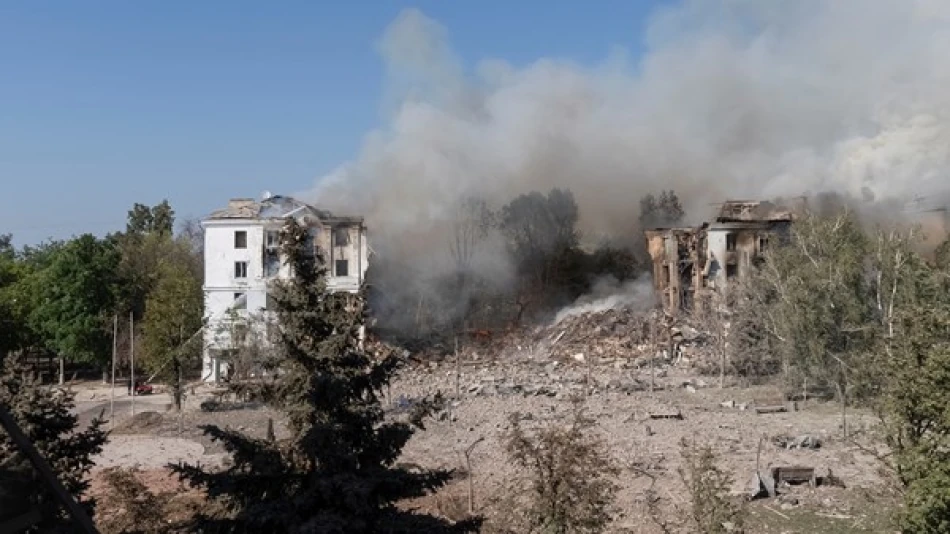
Putin Outlines Russia's Demands for Peace in Ukraine: A Geopolitical Clash Unfolds
Putin Reaffirms Unchanged Russian Peace Terms as Ukraine War Drags Into Third Year
Russian President Vladimir Putin doubled down on Moscow's existing peace conditions for ending the Ukraine conflict on Friday, signaling little flexibility in Russia's negotiating position despite mounting economic pressures and battlefield stalemates. His comments suggest the Kremlin remains committed to maximalist territorial and security demands that Ukraine and its Western allies have consistently rejected.
Russia's Familiar Peace Formula
Speaking to journalists, Putin emphasized that Russia seeks "permanent and stable peace based on solid foundations that satisfies Russia and Ukraine and guarantees the security of both countries." However, his assertion that "the conditions remain the same, of course" from Russia's side indicates no softening of Moscow's previously stated demands.
These conditions, outlined in various forms since the invasion began in February 2022, typically include Ukrainian neutrality, recognition of Russian territorial claims, and significant limitations on Ukraine's military capabilities—terms that Kyiv has categorically rejected as tantamount to surrender.
Strategic Implications Behind the Rhetoric
Domestic and International Messaging
Putin's restatement serves multiple audiences simultaneously. Domestically, it reinforces the narrative that Russia remains open to reasonable peace while Ukraine and the West refuse dialogue. Internationally, it may be designed to exploit war fatigue in Western capitals and growing calls for negotiated settlement among some political factions.
Economic Pressure Points
The timing coincides with Russia facing its most severe economic constraints since the war began. Western sanctions have increasingly targeted Russia's energy revenues and financial system, while military expenditures consume an estimated 6-8% of GDP. Yet Putin's unchanged stance suggests the Kremlin calculates it can outlast Western resolve rather than moderate its demands.
Historical Precedent and Negotiation Patterns
Russia's approach mirrors tactics from previous conflicts in Georgia (2008) and the initial Ukraine crisis (2014), where Moscow maintained maximalist positions until achieving de facto territorial gains. The strategy relies on gradual normalization of new realities rather than formal peace agreements.
Unlike successful post-conflict settlements such as the Camp David Accords or Good Friday Agreement, the current dynamic lacks mutual recognition of legitimate interests—a prerequisite for sustainable peace negotiations.
Market and Geopolitical Calculations
Putin's inflexibility reflects confidence in several strategic assumptions: that European resolve will weaken as energy costs bite, that U.S. political dynamics may shift support for Ukraine, and that time favors Russia's larger population and resource base. Energy markets have already shown sensitivity to peace speculation, with natural gas futures fluctuating on diplomatic signals.
For investors, the unchanged Russian position suggests continued geopolitical risk premiums in European markets and sustained pressure on global commodity supplies. Defense sector investments remain elevated, while reconstruction opportunities in Ukraine stay distant.
The Stalemate Continues
Putin's reaffirmation effectively closes the door on near-term diplomatic breakthrough, despite growing international pressure for negotiated settlement. His emphasis on "permanent" and "stable" peace while maintaining unchanged conditions reveals the fundamental contradiction at the heart of current diplomacy: Russia seeks to negotiate the terms of its victory rather than genuine compromise.
This dynamic virtually guarantees continued military confrontation, making 2024 likely to see intensified efforts by both sides to create battlefield facts that could eventually shift negotiating positions—assuming negotiations ever meaningfully resume.
 Layla Al Mansoori
Layla Al Mansoori







